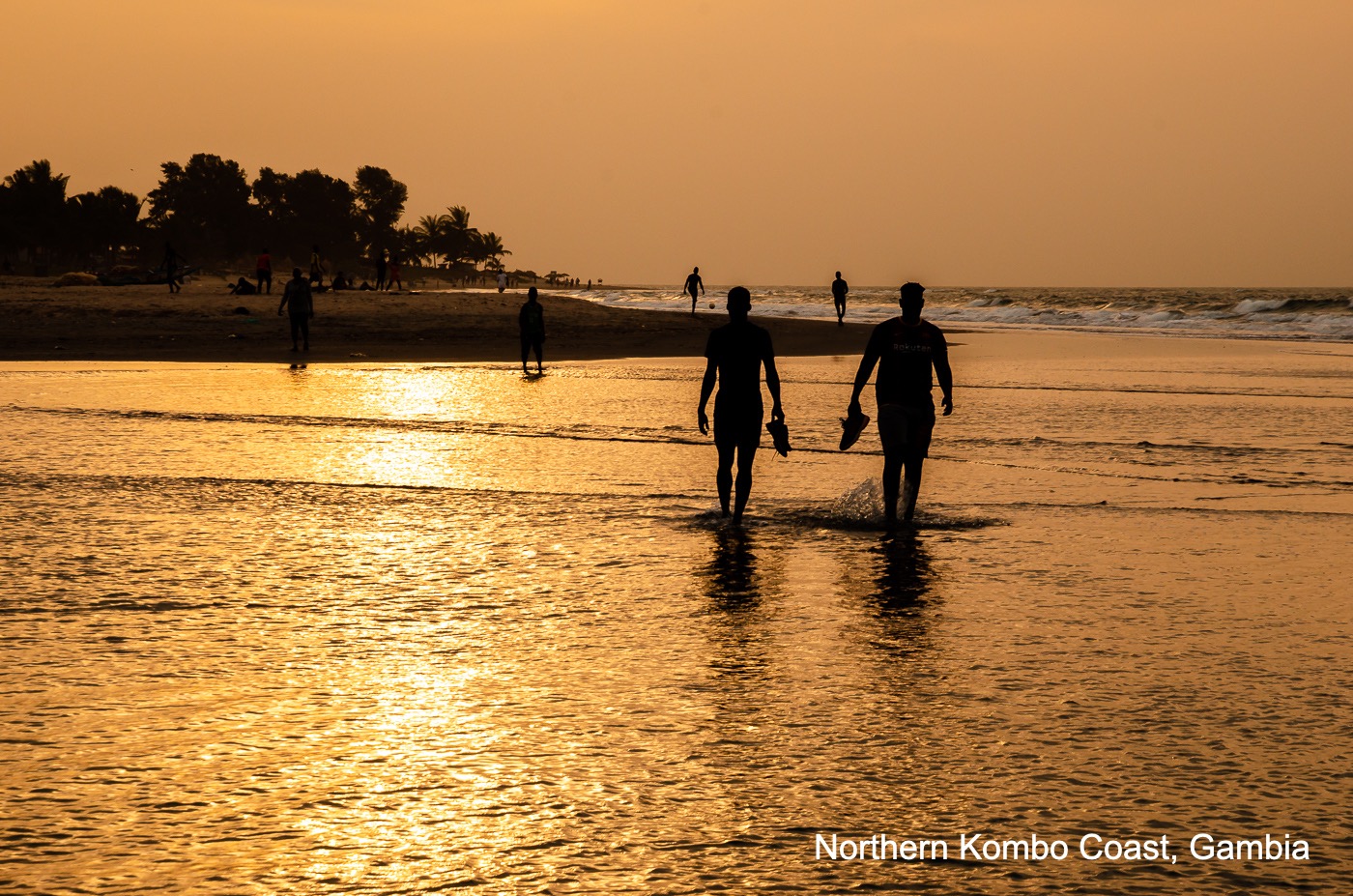Gambia is a small, densely populated West African country completely surrounded by Senegal except for the Atlantic Ocean. The finger-like shape comes from being a former English colony situated on each side of the Gambia River.
The official name of Gambia is the Republic of The Gambia (with a capital “T”). On maps it’s usually identified as The Gambia.
Economically it’s a poor country with half of the population living in poverty. Yet it has an abundance of cultural and natural attractions. The people are generally friendly with several ethnic groups living there including the Malinke, Diola, Wolof and Fulani. It has archeological monuments from 1,500 years ago and is the birthplace of Kunta Kinte, the fictional protagonist of the novel and television series “Roots.” Birdwatching is world class and in habitats of several wild animals including chimpanzees, hippos and crocodiles. On top of this, it has many sandy and attractive beaches, some easily accessible and others remote.
Most people visit Gambia as an extension to touring Senegal and usually spend only a few days, often to “check it off the list.” However, for those with a little patience, they can find an exceptional country worth exploring.
Where is Gambia?
Gambia is surrounded by Senegal, but not too far from some of Senegal’s neighbors, namely Guinea Bissau, Guinea and Mali. Northwest in the Atlantic Ocean, 750 km / 465 mi, is Cabo Verde (Cape Verde).
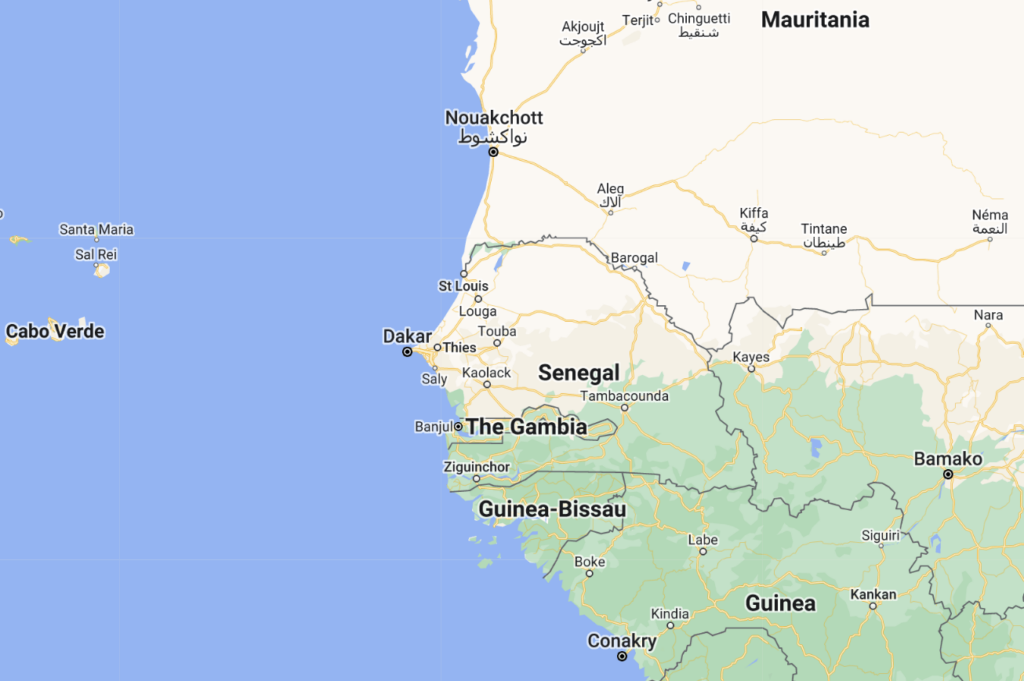
The capital Banjul is located at the mouth of the Gambia River, very near the Atlantic coast. For a country of 2.5 million, it’s small, only 4.5 sq mi / 12 sq km with a population of 50,000.
Why we went to Gambia
My wife Khadija and I were visiting Senegal and, like many, we decided it made sense to go there, as no other country borders Gambia.
How long to spend in Gambia?
We spent three days in Gambia which is the minimum to get a feel for the country but in a rushed way. A week would be ideal.
Is Gambia safe?
Gambia is mainly safe to travel, but it has a high crime rate (mainly petty theft, not particularly directed towards tourists), so you need to employ basic safety precautions and use common sense to avoid problems. For example, be careful late at night or on deserted streets and beaches.
Is Gambia expensive?
Although the cost of living there is low, the cost of visiting Gambia can still be fairly expensive. Accommodation prices are often relatively high for Africa, while the cost of restaurant food and private transportation can also add up. Package tours to Gambia from the UK are available and can be good value if you plan on staying mostly on the beach.
Having said this, budget travelers can go cheaply if they take crowded bush taxis, buy food in markets and stay in guest houses with service and facilities that are often not up to basic Western standards.
Where to stay in Gambia
The first night we arrived late and stayed at the Holiday Beach Club which was okay but dated and musty. The next night we were in the nearby Sun Set Beach Hotel, about 16 km / 10 miles from both the airport and Banjul. The small rooms were clean and there was an outdoor swimming pool, decent buffet breakfast, a bar and a restaurant. The best part was it was right on the beach in the area known as Northern Kombo.
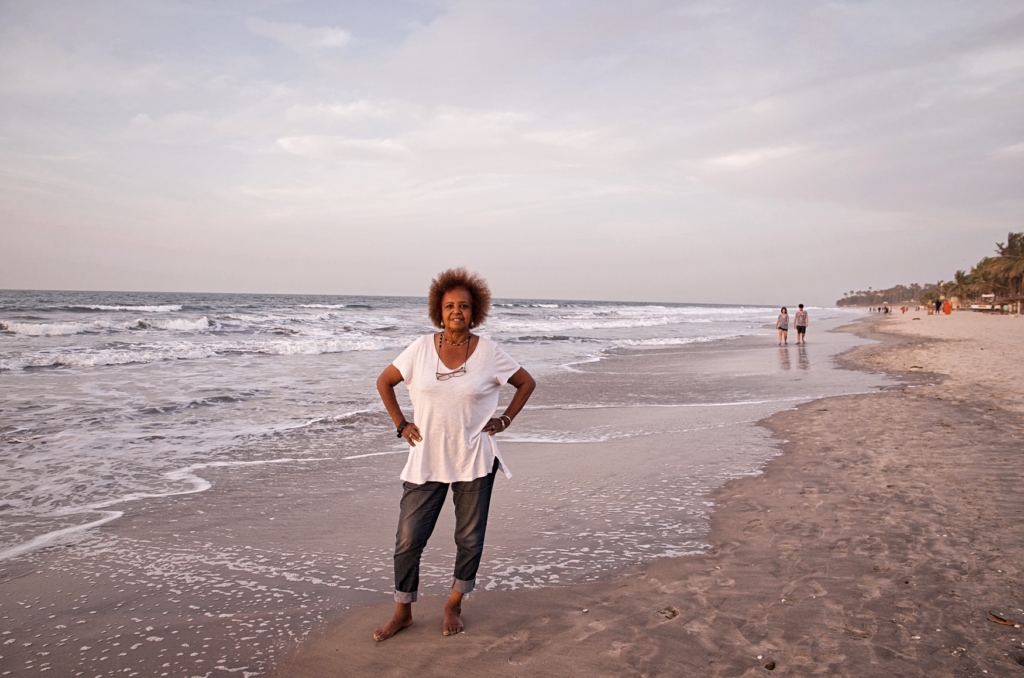
Few swim here as the waves are rough, but a few brave surfers test their skills in the Atlantic waves.
Gambia has a reputation for sex tourism, especially for middle aged Western women. There are many online articles and posts about this. We never saw it in any way, but in our hotel there were many middle aged women from the U.K.
We spent our night in the interior at the rustic, wooden Lamin Lodge, a popular destination for birders. The electricity was out in our basic room and there was no pump for water, but we managed okay. The buffet dinner and breakfasts were tasty and filling.
How to travel through Gambia
As our time was limited, we arranged a tour with Armstrong of Black and White Safari who provided an efficient view of the country’s highlights. In the picture below, he’s next to me, then our excellent guide Alex and our competent driver Bernard.

Renting a car is an option but you have to deal with intense traffic in Banjul, intermittent reckless drivers and severely potholed roads. Driving after dark is more challenging because of poor road and vehicle lighting.
Gambia has buses which go to a few locations across the country and to Senegal and Guinea Bissau. We didn’t notice any, but we weren’t looking for them.
Bush taxis are a cheap cross-country option, but very crowded and confusing for visitors.
To enter the country, you can drive from Senegal or fly to the Banjul International Airport.
Here’s a map of the places we went and ones we’ll visit next time.
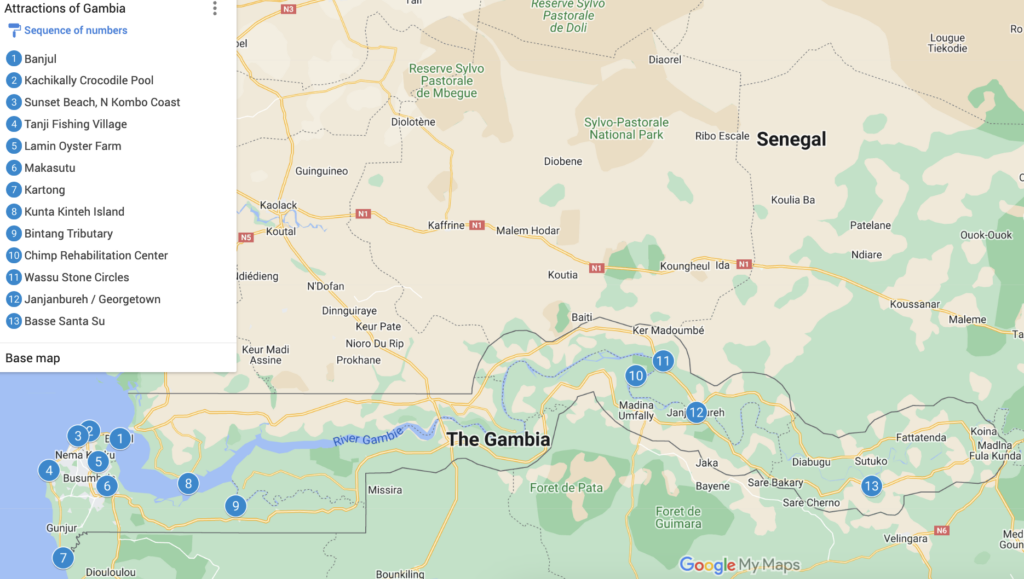
What languages are spoken in Gambia?
While English is the official language, other languages include Mandinka, Fula, Wolof, Jola, Serahuli, and Soninke and represent the different ethnic groups in the country. Not everyone speaks English, but you can easily travel using it.
What is the cuisine of Gambia?
Gambia has a variety of traditional and ethnic cuisines as well as Italian, Indian, Chinese and Lebanese restaurants (such as Ali Baba Restaurant in Banjul). It seemed everywhere we stopped, we usually ended up eating the popular West-African dish of chicken yassa, flavored by onions, lime and spices.
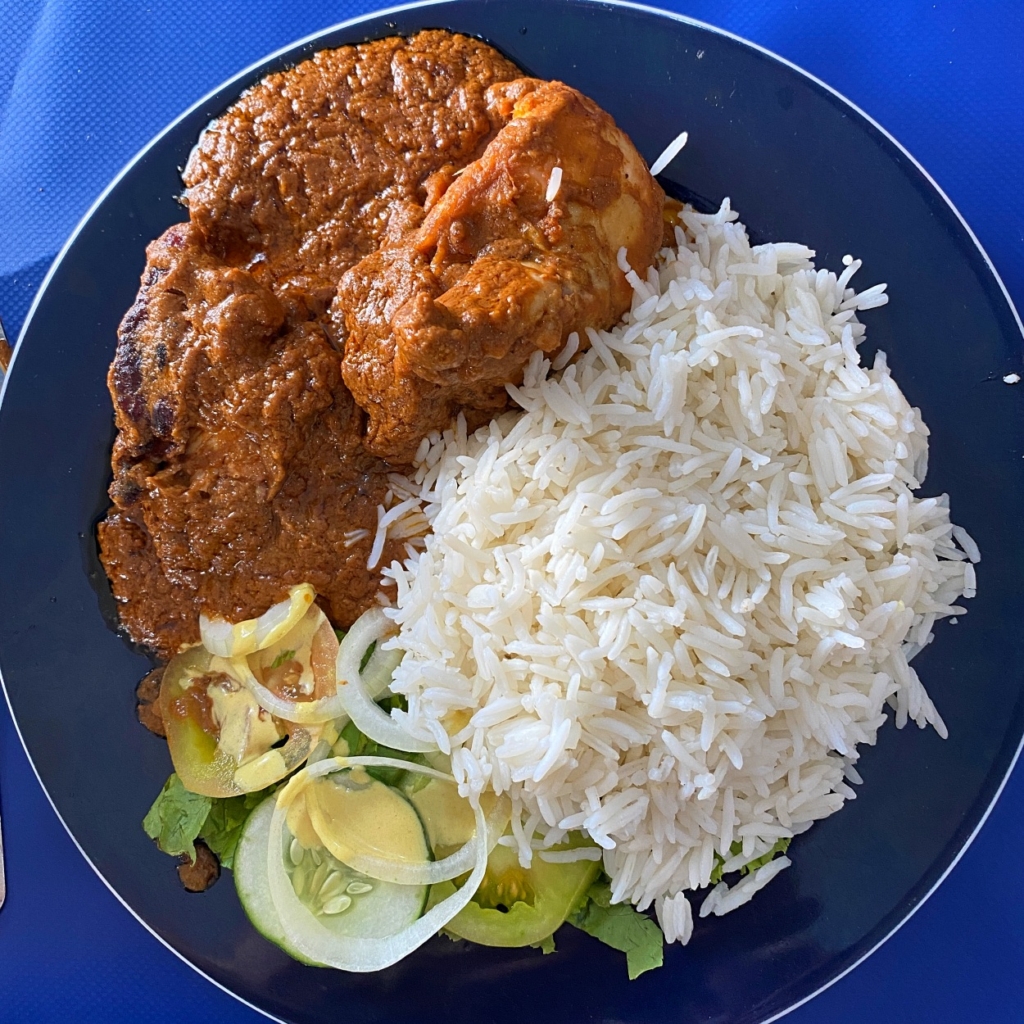
Also common is domoda, a peanut-based stew with vegetables, combined with chicken, beef or fish.
While driving, there were always folks selling food on the side of the road, including these young boys hawking watermelons.
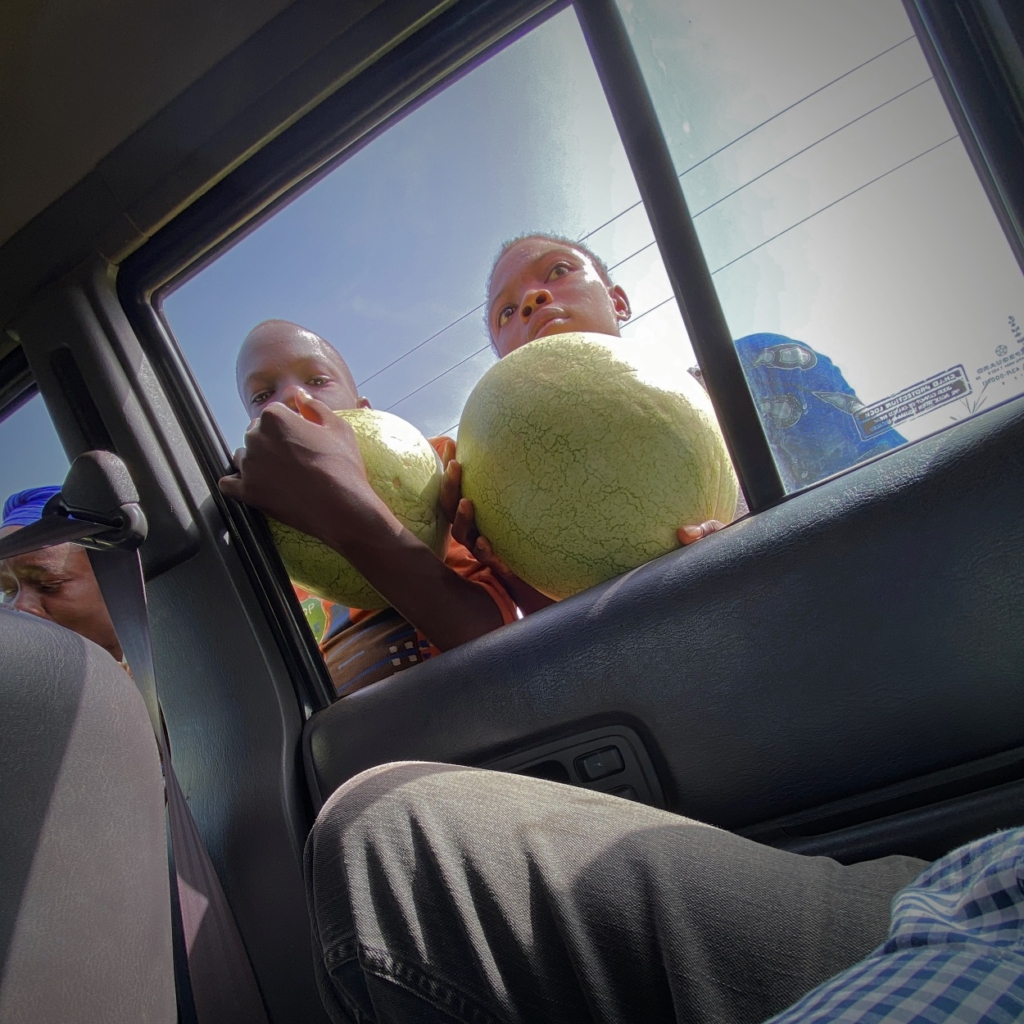
Historical and Cultural Info
In the 12th century, Gambia was part of the Mali Empire. In the 16th century, the area was visited by Portuguese explorers and traders, and in the 18th century, it became a British colony (resulting in English being an official language). Gambia gained its independence in 1965, with the nation’s first president leading the country until a military coup in 1994.
Gambia then was ruled by the corrupt Yahya Jammeh, who routinely committed human rights abuses and electoral fraud. Under his rule, Gambia saw a decline in its economy, making it one of the poorest countries in the world. In 2017, Jammeh was eventually forced to flee the country after losing a presidential election, especially with intense pressure by the Economic Community of West African States and United Nations.
In 2018, Adama Barrow was elected as the new president of Gambia and was up for reelection in December 2021. We witnessed intense campaigning, especially in phalanxes of vehicles, with each party wearing their distinctive colors. Our driver Bernard was animated in his support of Barrow’s opposition. Barrow was re-elected shortly after we left in an election considered fair by international observers.
Gambia is 95+% Muslim and, like Senegal and its nearby Mali, has historically had impressive religious freedom with a pacifist tradition. The Christian community essentially is the rest of the country with Roman Catholics as a majority.
Banjul
Banjul is the capital city and first established as a trading post by the Portuguese in the 16th century. It’s on St. Mary’s Island and connected to the mainland by Denton Bridge. It’s worth, at most, a day’s visit.
Arch 22
Arch 22 is a public monument in Banjul which commemorates the July 22, 1994 coup d’état (thus the name) that saw the overthrow of the country’s democratically elected president, not the usual reason for such a marker.
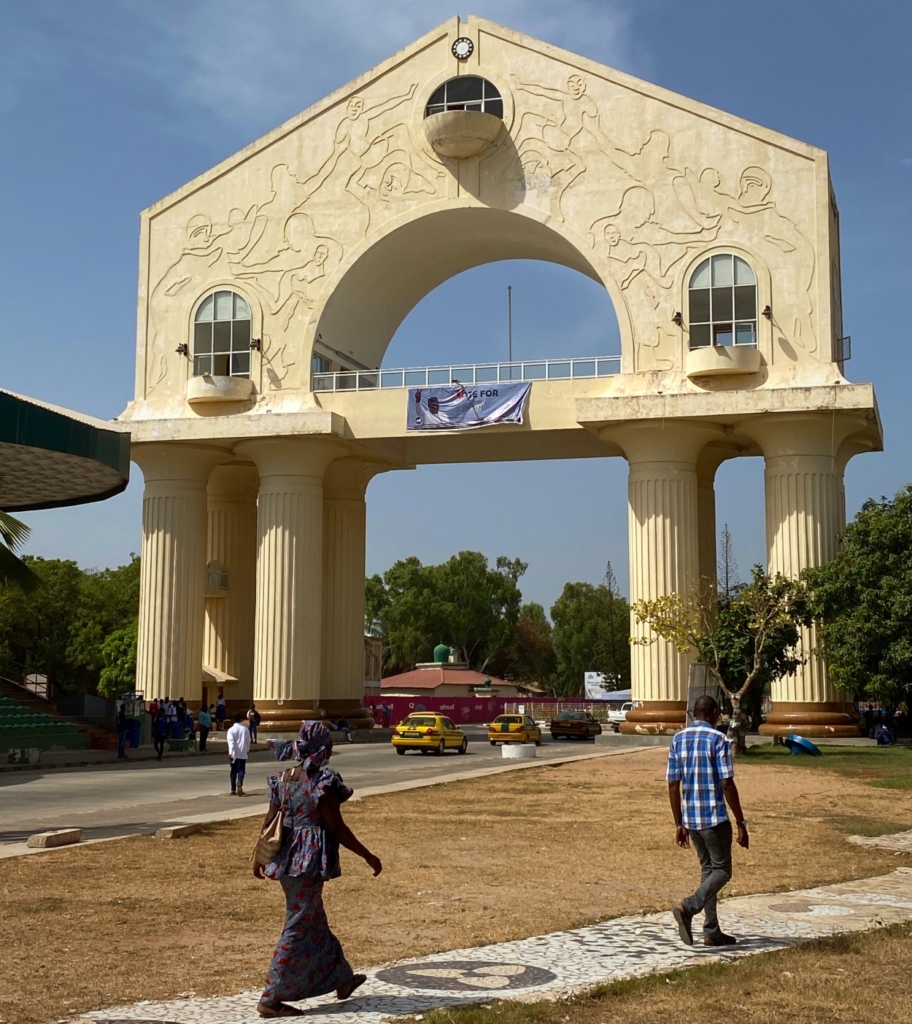
The edifice is a metal arch standing on eight, thick, hollow columns and is the highest structure in the country. From the viewing areas, it provides panoramic views of Banjul.

Gambia has a Truth, Reconciliation and Reparations Commission examining the dreadful abuses during the Jammeh period. Part of the TRRC’s work includes an exhibit of photos of victims with descriptions of their mistreatments.
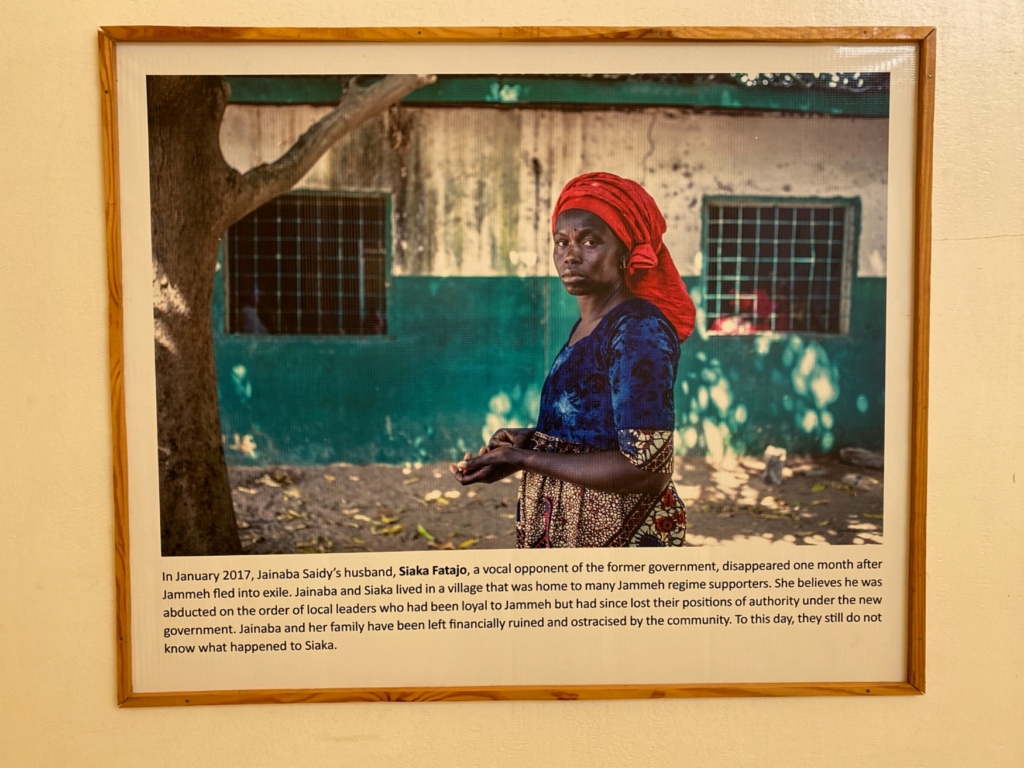
National Museum
A highlight was the small Gambia National Museum and its many artifacts about the country’s culture, including these stringed, musical instruments.
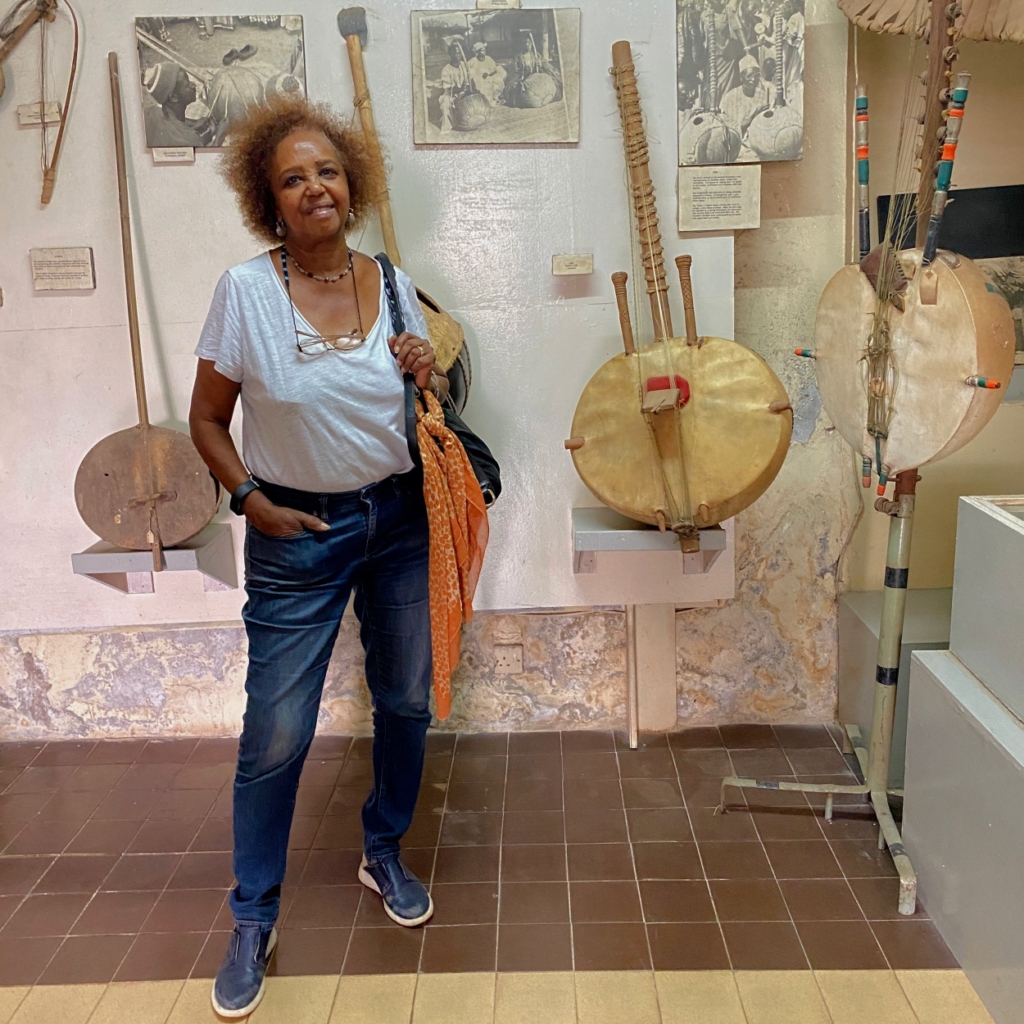
Outside is the Statue of the Unknown Soldier, which used to stand by Arch 22. The larger-than-life soldier is carrying a baby, making a peace sign and has a rifle strapped across his back.

Albert Market
The quintessentially African Albert Market is centrally located in Banjul with stores and stalls selling fresh produce, fish, meats, spices, handicrafts, textiles, and more.
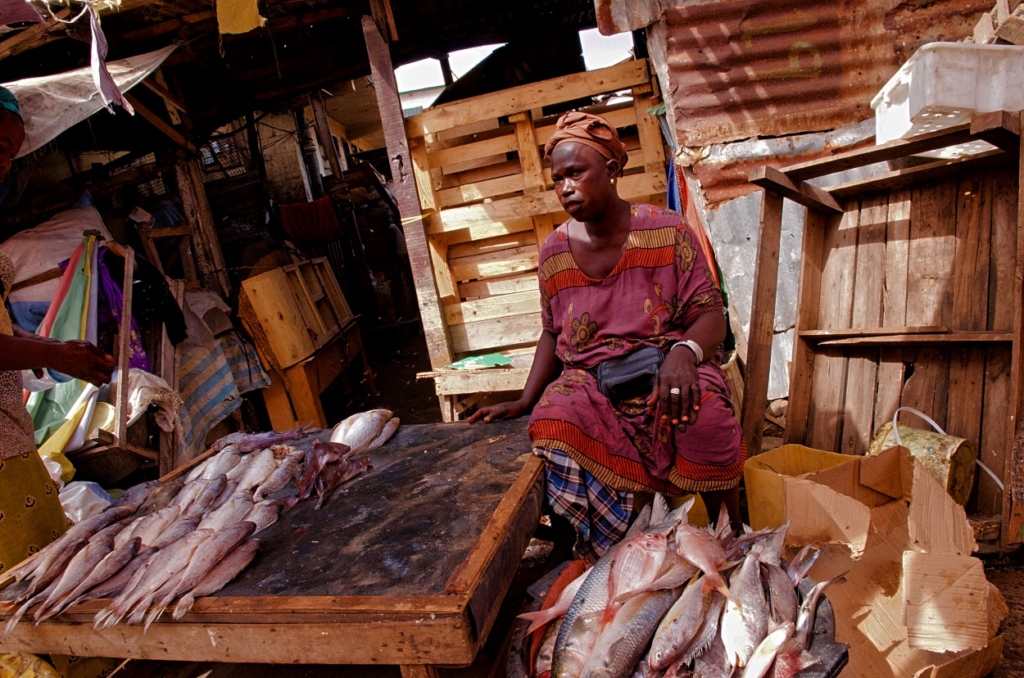
Banjul – Barra Ferry
We took the ferry to Barra as the beginning of our journey of the north side of the Gambia River.

It’s a short trip and a people-watching delight.
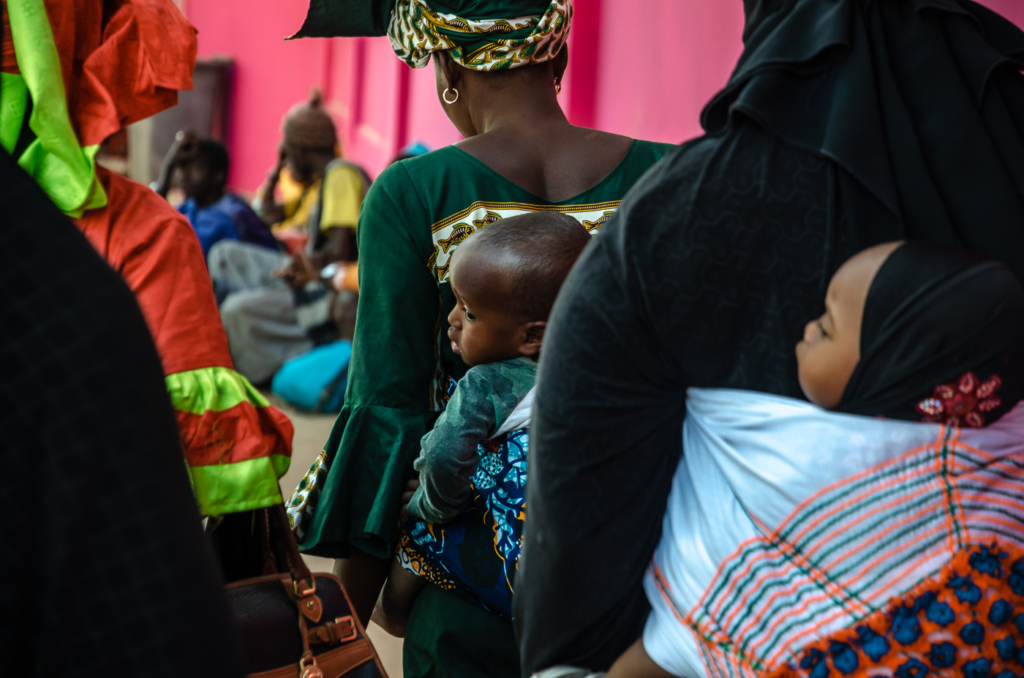
While waiting to board we had a long conversation with Sarjo, a police officer who worked in peacekeeping in other parts of Africa. I couldn’t shake from my mind that he looked similar to comedian David Chappelle.

Gambia Farming
While driving east on the north side of the Gambia River, we met a peanut and sorghum farmer named Musa (same as Khadija’s last name). He’s originally from Senegal, but somehow ended up here and spoke only Wolof.
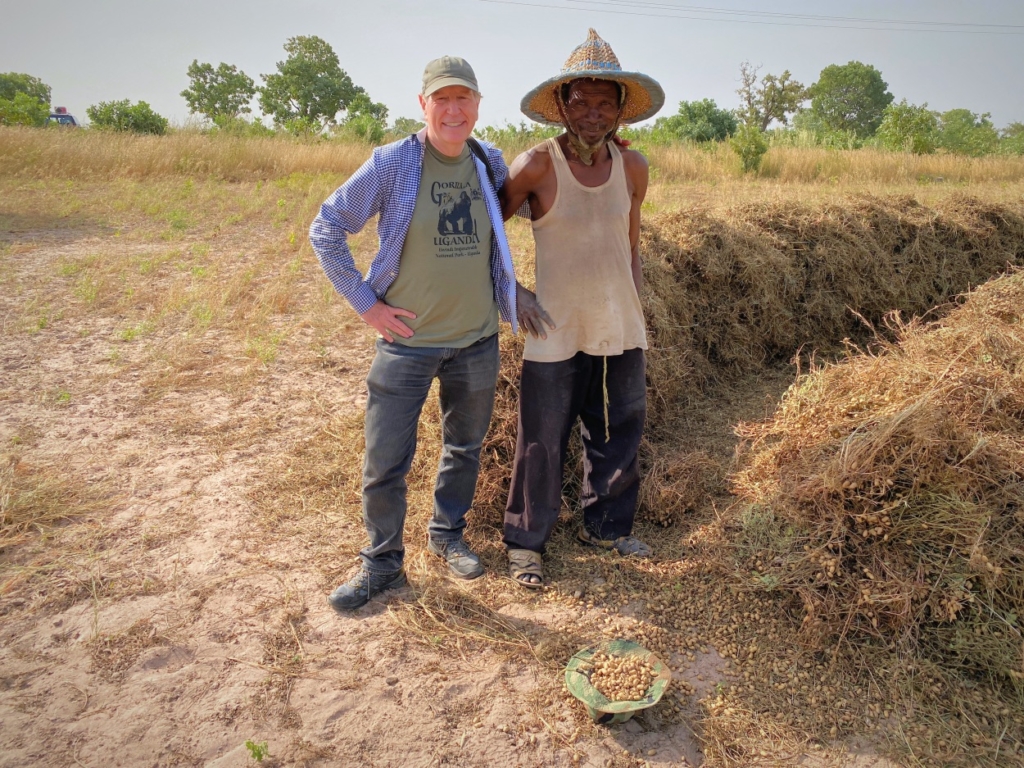
I don’t think I’ve ever seen sorghum seeds on the grass stalk. Sorghum plant is used to make bread and in West Africa for couscous (instead of semolina wheat). The grass was about 2 m / 6 ft high.
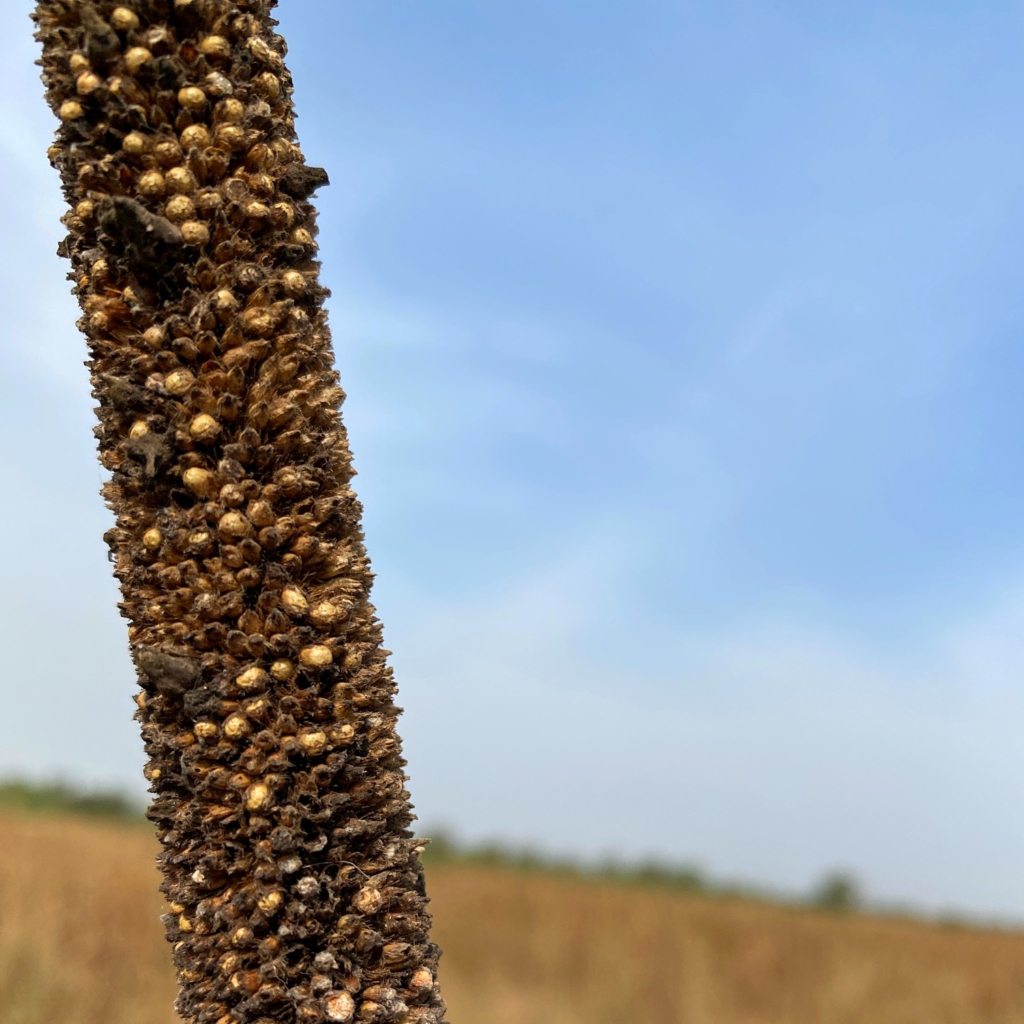
It was interesting noting the basic way peanuts are winnowed from the cut plants.
Bird Watching
Even though Gambia is small, it has over 500 endemic species of our feathered friends and numerous visiting, migrating birds. As the country is relatively easy to travel in and English is widely spoken, it’s one of the most popular places in Africa for bird watching.
We saw a number of small, colorful birds, but they were flitting here and there and often far away. As such, I didn’t get any decent photographs except of large ones, such as these egrets by a marshy area.
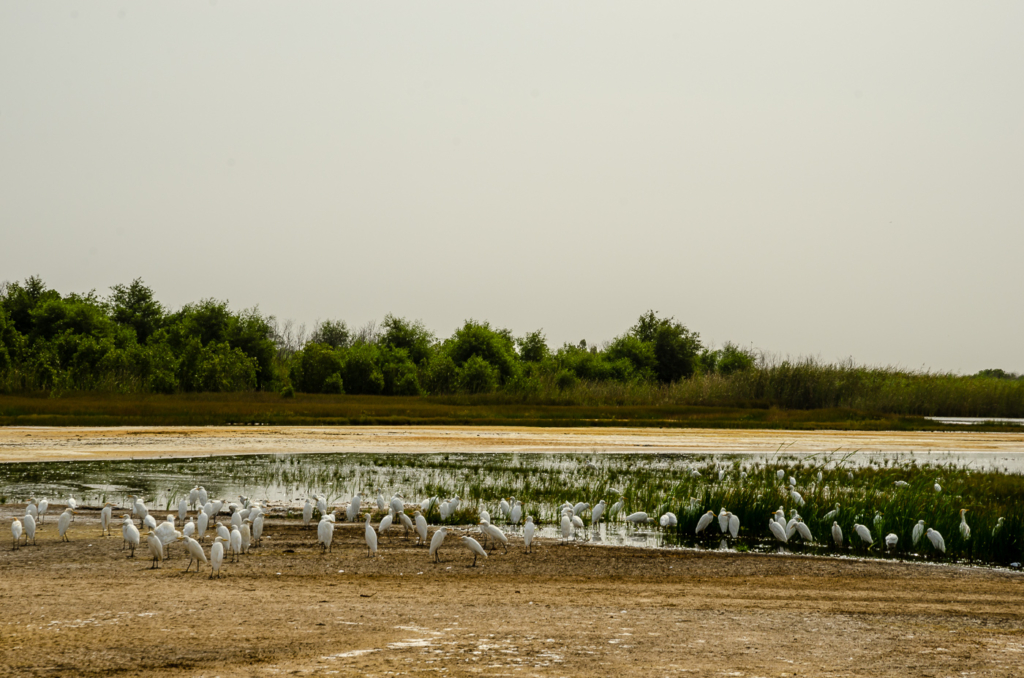
If you would like to pursue this, you can join one of the many bird watching tours available. A good alternative is using your binoculars or the long lens of your camera along with a bird identifying book.
Farafenni Market
Farafenni, close to the border of Senegal, is a town on the Trans-Gambia Highway, which runs across Senegal in a north–south direction and goes through Gambia. Not surprisingly, this is an excellent location for a market and a good one to pick up on local life.
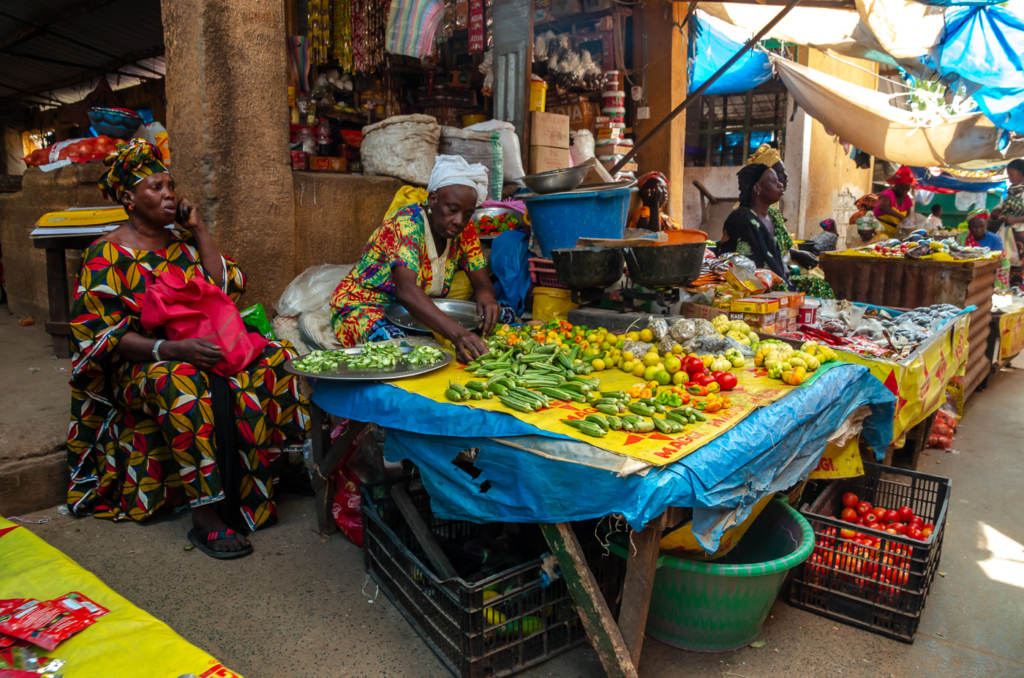
Wassu Stone Circles
The “Stonehenge of Gambia” in Wassu has megalithic stone circles made of laterite, a reddish clay material, with smooth surfaces. Wassu, Kerbatch in Gambia and three sites in Senegal are collectively a UNESCO World Heritage Site with approximately 29,000 stones. In Wassu, each circle is composed of 10 to 20 stones of a height between 1 to 2 meters / 3 to 6 feet.
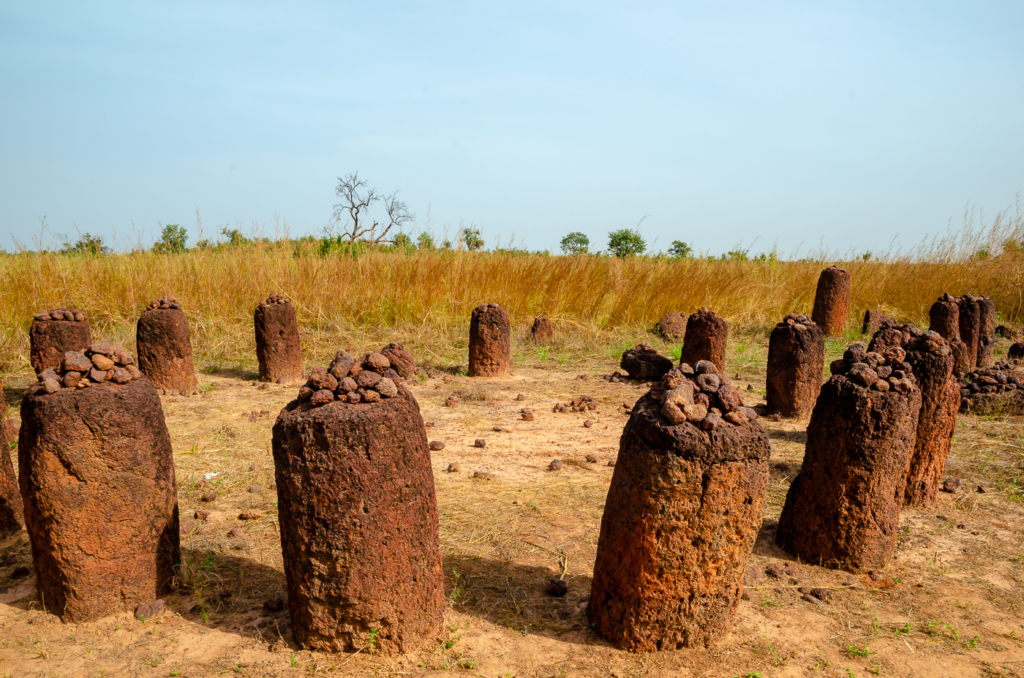
They are believed to be burial mounds of kings and chiefs and are dated to between 750-1000 AD. There’s a legend that anyone who disturbs them will be cursed; maybe that’s why they have survived.
Chimpanzee Rehabilitation Project
The Chimpanzee Rehabilitation Project was established on islands in the Gambia River National Park in 1979, for the care and reintroduction of orphaned and unwanted chimpanzees. Wild chimpanzees disappeared from Gambia in the early 1900’s, but in this sanctuary, there are now more than 100 living in four separate social groups on three islands. While the chimps live freely, food is provided to them each day. We went by the islands during feeding time in a canoe and could see some through the thick foliage. What struck me is how big some are, the size of brawny adolescens.

Also in the Gambia River were hippos with their eyes and ears sticking out of the water…
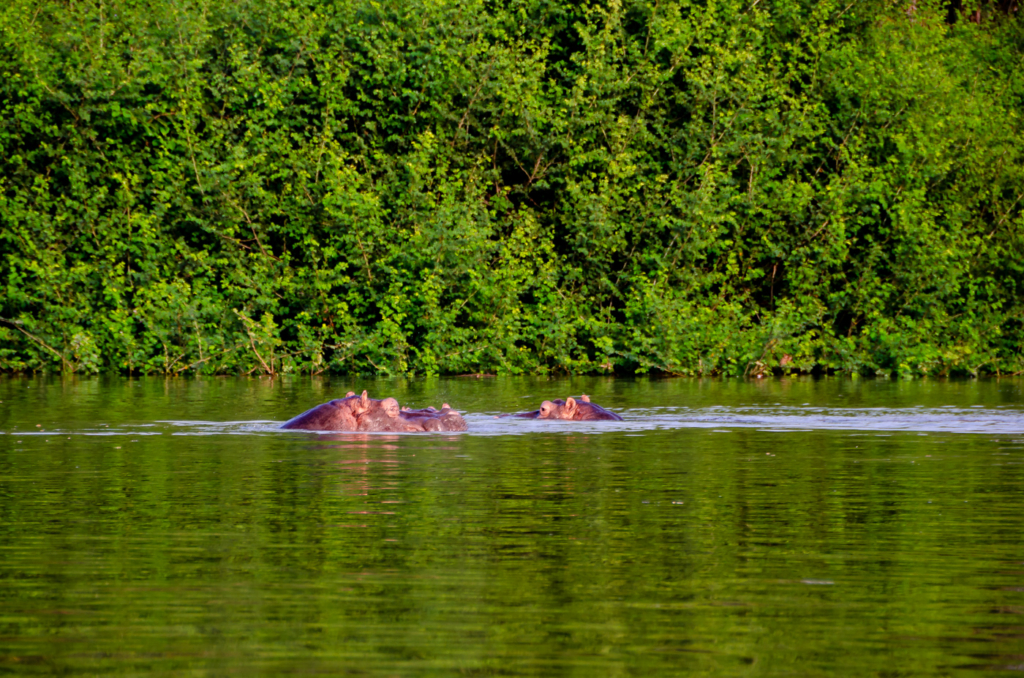
…and river fishermen casting their nets.
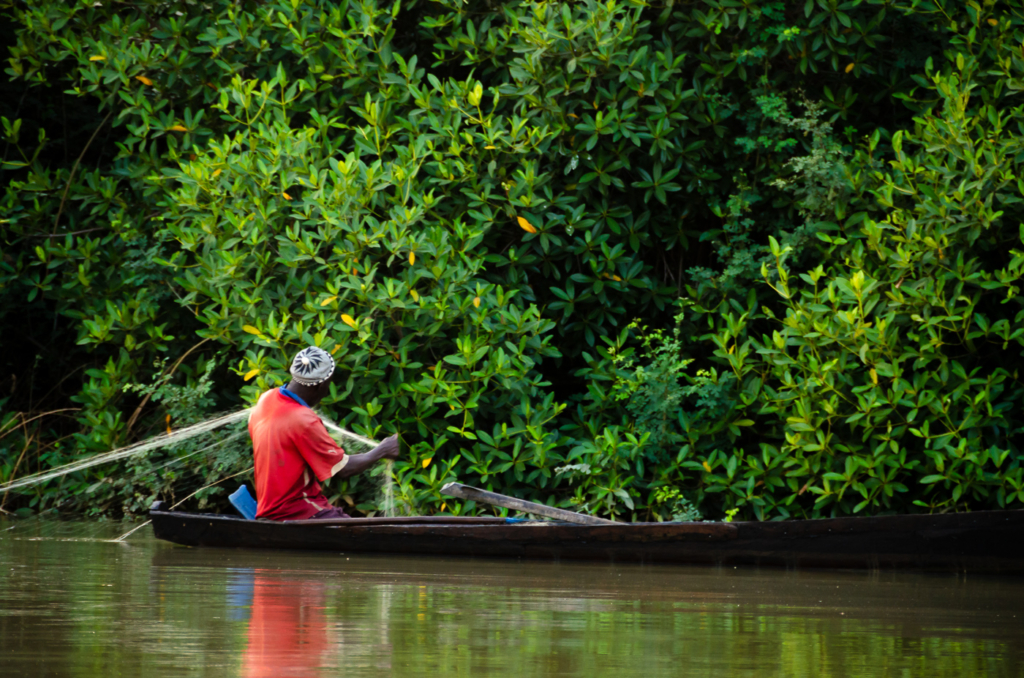
Janjanbureh
Janjanbureh Town (formerly Georgetown), on Janjanbureh Island (formerly MacCarthy Island), has a sleepy vibe from the faded colonial buildings.
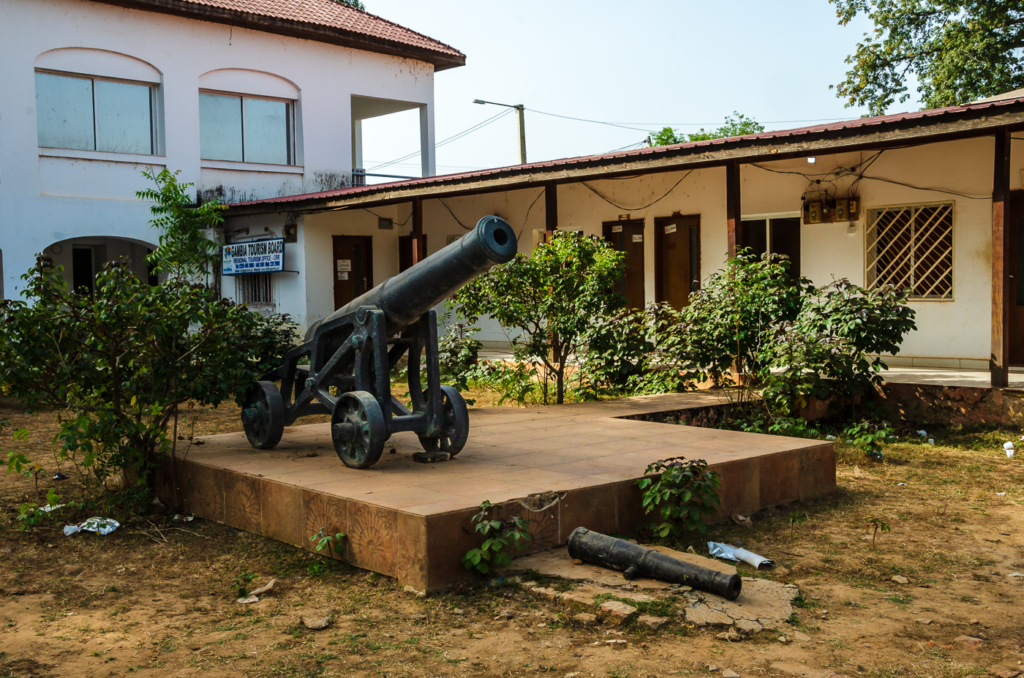
Because of its strategic location on the Gambia River, the British built a fort and settlement here in 1823, initially to facilitate the slave trade. The Methodist Church opened in 1835 and claims to be the oldest Methodist Church in sub-Saharan Africa.
The 20 sq km / 7.75 sq mi island is also another excellent place for birdwatching.
South of Gambia River
We went as far into the interior as we had time for, then started back, driving west on the southern side of the Gambia River.
We went through villages and towns, farms and orchards, and forests and wetlands, getting glimpses of local life.
We stopped in a Fulani village called Bantanto, where there were mainly children in the early afternoon (many of the parents were probably working).
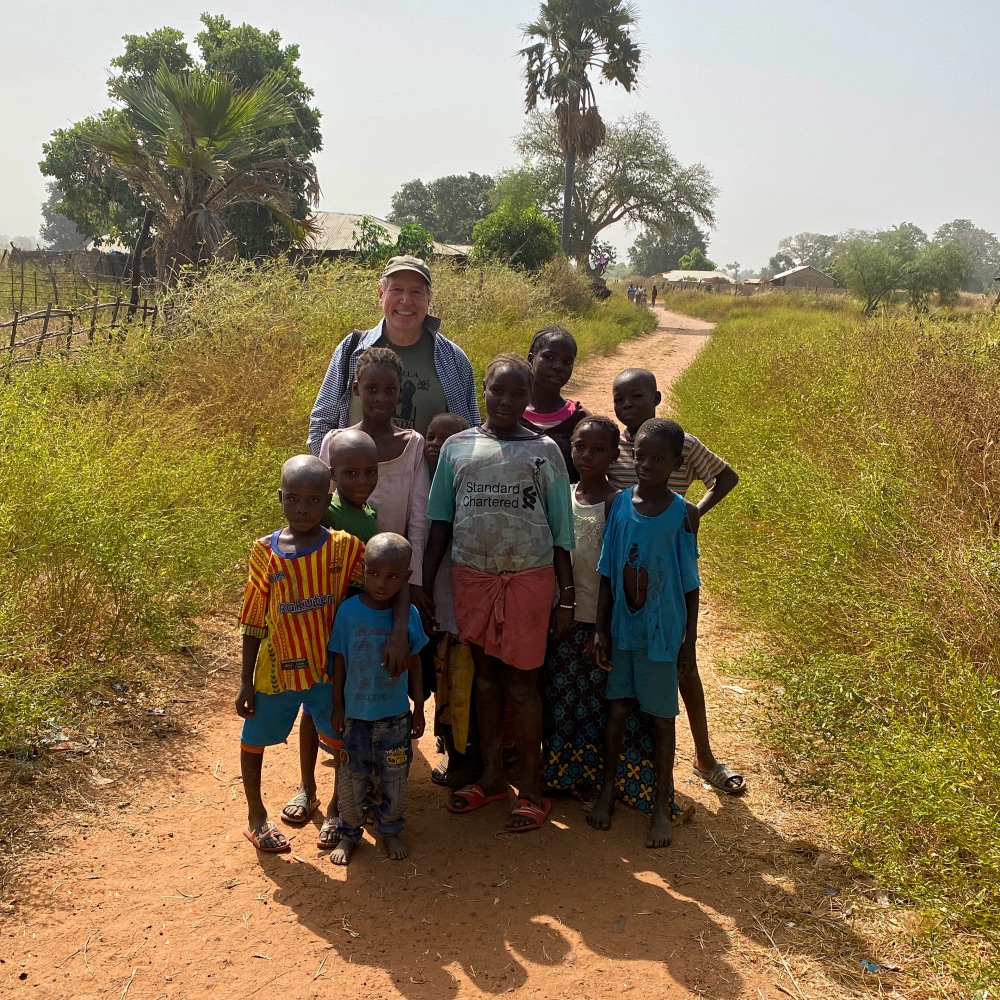
The Fulani culture is known for making facial scars, but these children must have been too young for this rite of passage.
Lamin Oyster Farm
While in the Tanbi wetlands, we saw women engaged in the backbreaking work of gathering oysters in buckets during low tide by mangrove trees. They are members of the TRY Oyster Women’s Association, based in the village of Lamin.

While there we took a canoe through the swampy area, where we found a gigantic silk cotton (Ceiba) tree.
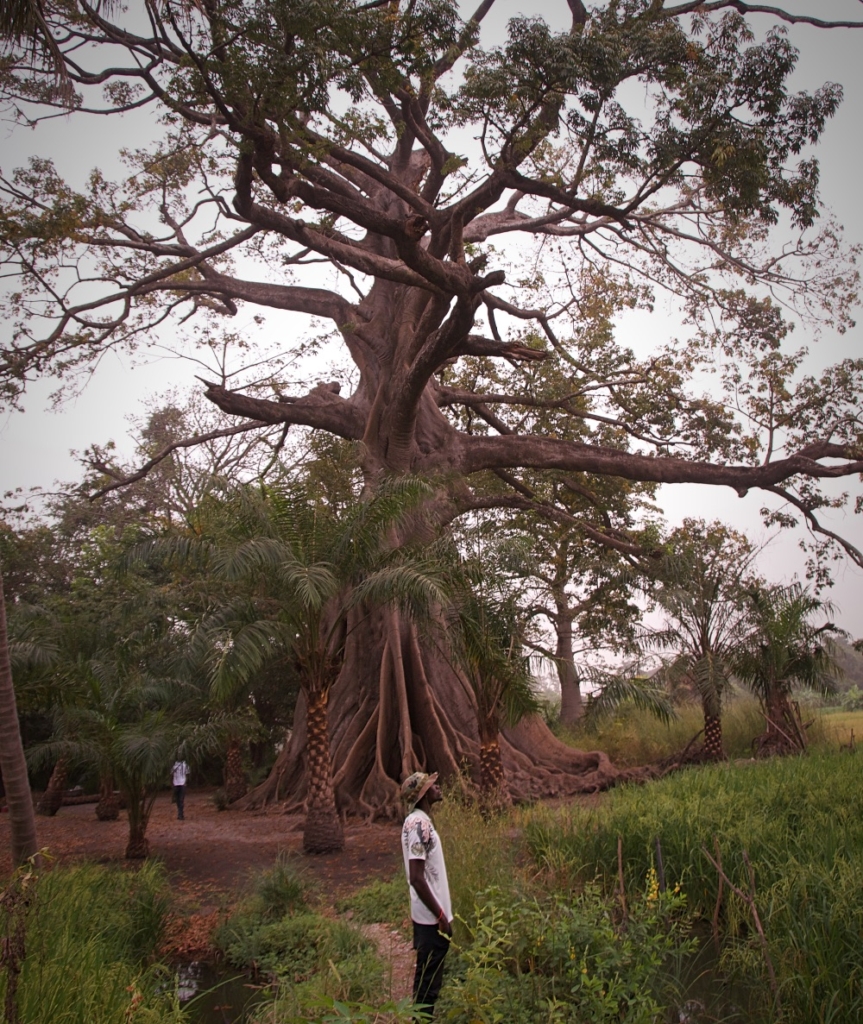
In the village was the Gambian version of billboard advertising.

This was definitely a remarkable experience; however, some people of the village obnoxiously took every opportunity to extract money from you for supposed fees and tips for even people you didn’t meet.
Places We Didn’t Go (Next Time)
We could’ve spent at least four more days in Gambia, visiting:
Christmas and New Year’s celebrations (if we came a few weeks later), including masquerade parties, parades of elaborate animal costumes, and performances of dancers, musicians and acrobats.
Birdwatching tours with professional guides.
Kunta Kinte Island, a UNESCO World Heritage site, with ruins of several British colonial buildings and skeletal baobab trees remain.
Makasutu Culture Forest, a private woodland reserve, south of Banjul. The nature park encompasses a tributary of the Gambia River and its pristine forests accommodate boat rides along mangroves and guided treks.
Bintang Tributary, located on the edge of the water with opportunities to fish and boat and see plenty of birds and crocodiles. You can stay overnight in basic huts on stilts over the river.
Kartong Village and its adjacent beach at the southernmost point of Gambia. It’s peaceful, secluded and well off-the-beaten-track.
Basse Santa Su, the easternmost town in the country and the locale of a busy market.
Kachikally Crocodile Pool, in a suburb of Banjul, one of three sacred crocodile pools used as sites for fertility rituals. Definitely a tourist trap, but where else do you see 80 crocodiles in one place? The pool is still a popular pilgrimage site for barren women.
Tanji village on the Atlantic coast, where fishermen take their colorful boats for several days. If you’ve seen this in Mbour or St. Louis in Senegal, you may want to spend your time on other activities.
Final Thoughts
While we are working on visiting every country, it’s appealing to return to a place you’ve been and see if it has changed.
We drove to Jakhaly, the location of a health center funded by a German NGO. When Khadija worked at the United Nations, she coordinated with the International Fund for Agricultural Development in increasing the yield of nearby rice fields and had visited this area.
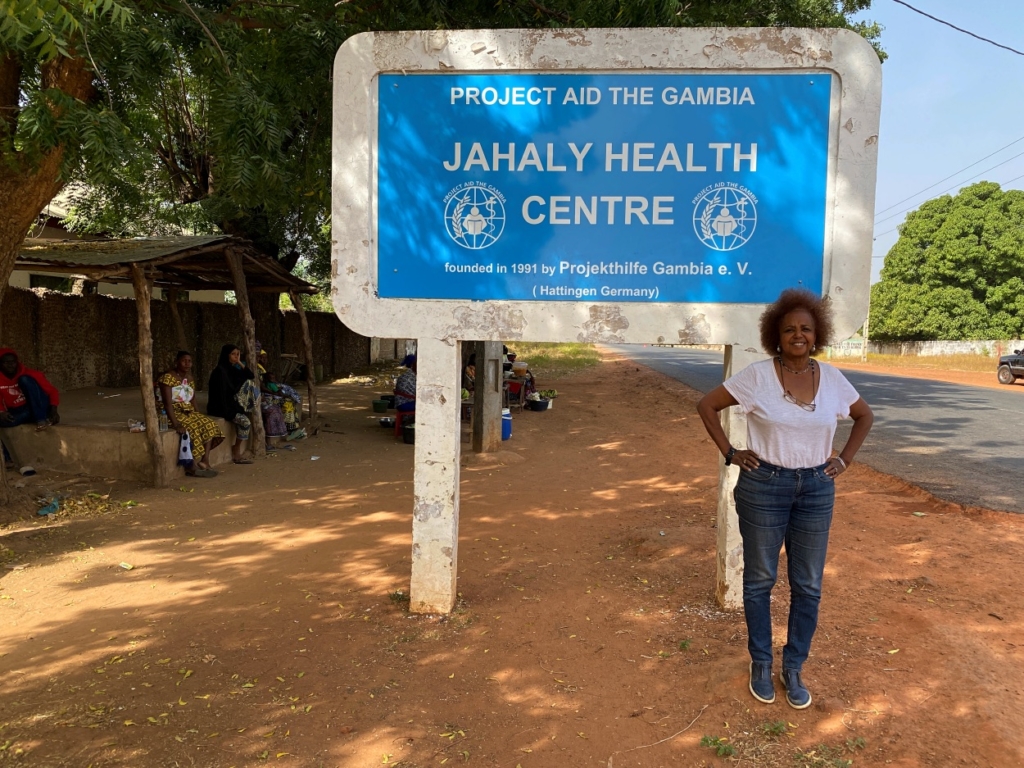
In this case, nothing dramatic had changed. The health center was there when she first visited. However, it was satisfying to find that it continued to be a robust area for rice cultivation.
When she went to Gambia the first and only other time, it was just a quick visit to Jakhaly. This time she (and I) was able to appreciate the immense cultural and environmental diversity of such a small country.

